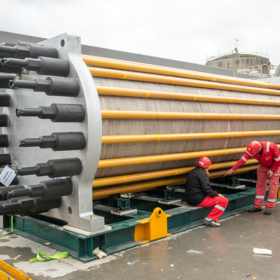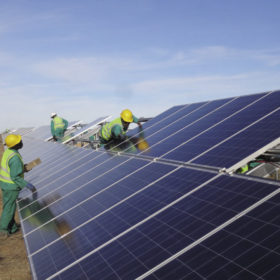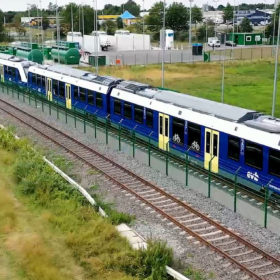Cape Town tenders for solar in bid to escape dependence on troubled utility
The city authority wants a developer to construct a 7 MW solar project for it as part of a push to widen its sources of electricity, and says clean energy will be cheaper than – largely coal-fired – grid power from Eskom.
HDF Energy wants to build utility scale solar hydrogen project in Namibia
The project consists of an 85 MW solar park and a green hydrogen production unit. The facility should begin commercial operations in 2024.
The case for residential, commercial Battery Energy Storage Systems in the MENA region
In this pv magazine Webinar, together with our partner JinkoSolar we will present energy storage solutions and some business cases for the MENA regions while discussing how projects may be conceived under local government policies and programs.
The Hydrogen Stream: World’s largest electrolyzer to be deployed in Norway
HydrogenPro is set to install the world’s largest electrolyzer in Norway, while Siemens is preparing to commission Germany’s second biggest electrolyzer.
Financial close for 200 MW of solar in South Africa
Sola Group and Tronox have finally reached financial close on two 100 MW solar projects in South Africa, roughly six months after signing power purchase agreements.
South Africa increases capacity of sixth renewables procurement round, leaves solar quota unchanged
The South African authorities have increased the total capacity of the next round of the Renewable Energy Independent Power Producer Procurement Program (REIPPPP) from 3.6 GW to 4.2 GW.
The Hydrogen Stream: Germany launches world’s first operating hydrogen trains
Germany has launched the world’s first operational hydrogen trains and US researchers have presented a novel design for a tubular PEM fuel cell. ABB and Hydrogen Optimized, meanwhile, have expanded their strategic ties and Slovakia has moved forward with a major gas-blending pilot project.
Zambian utility launches tender for 50 MW of solar
ZESCO has kicked off a tender for solar projects in Zambia’s Southern, Western, and Luapula provinces.
What ultra-powerful string inverters mean for utility-scale and EPCs
String inverters continue to grow in capacity to support the growing size and output of high-power and high-current PV modules becoming more normal at utility-scale. And that’s changing the equation for LCOE, at a critical growth point in the solar industry. In this pv magazine Webinar, we’ll hear from Sungrow about its new maximum-power three-phase 352kVA utility string inverter, the SG350HX, and discuss availability, certifications, and how LCOE is affected.
Demonstrating durability in n-type modules
The promises of a longer lifetime and better performance under harsh conditions, such as desert heat, are among the key reasons the PV industry is beginning to make the switch to n-type technologies. While the cell technologies themselves are a major factor, there’s a whole lot more to think about when it comes to ensuring long-term reliability for modules in the field. In this pv magazine Webinar, we examine the joint roles of advanced cell technology and proven bill of materials in ensuring reliability as expected lifetimes for PV modules move to 30 years and beyond.







